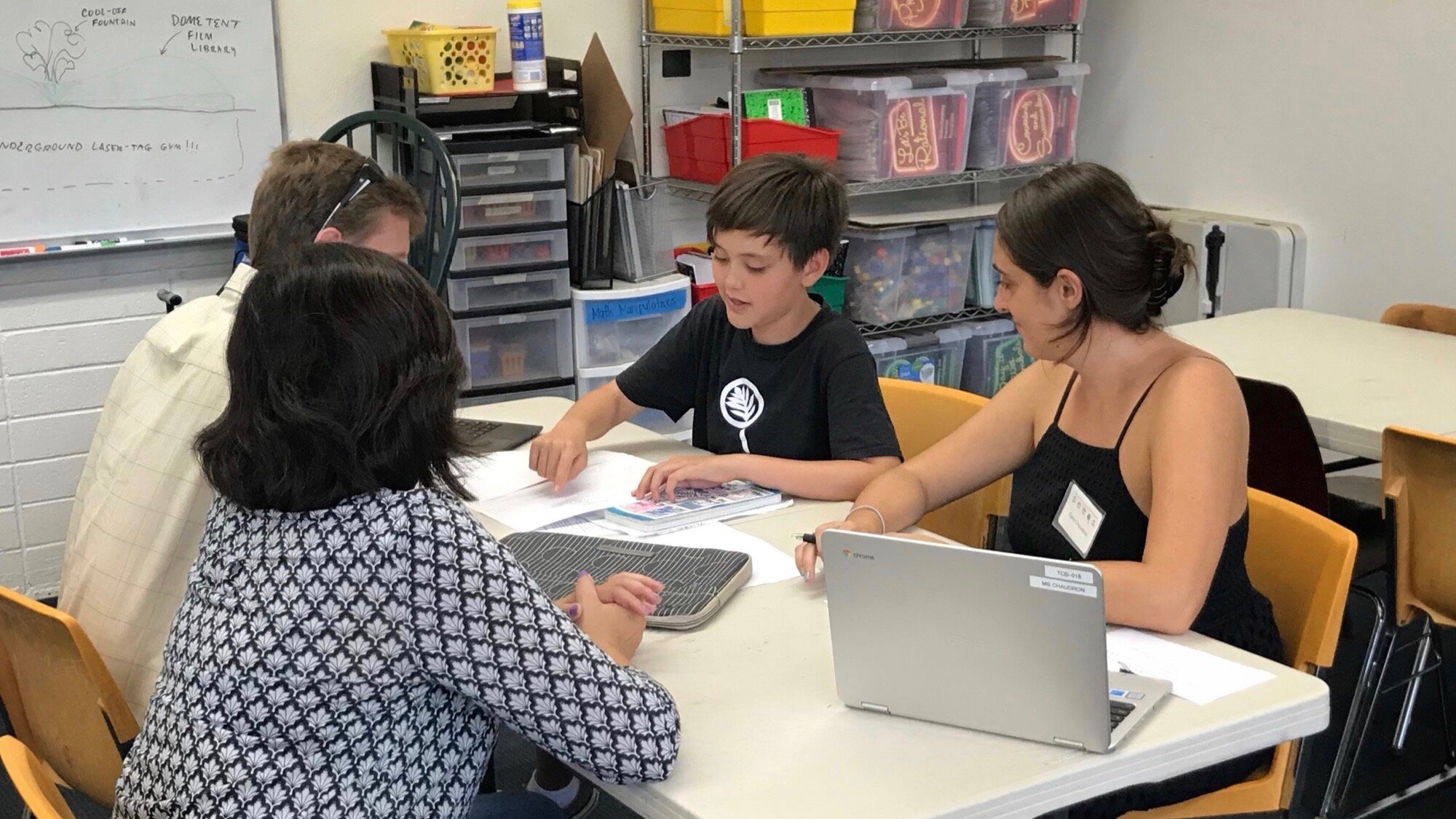
Student-Led Conferences (SLCs)
Telling Their Own Story
SLCs help students develop responsibility for and ownership of their learning, oral communication skills, and confidence. They also help open lines of communication between school and home. Most importantly, SLCs are a time for meaningful parent involvement and for celebration of students’ hard work! At SEEQS, SLCs happen at the end of the first and third quarters. Parents sign up for a 25-minute time block during an early-release school day to meet with their child and their child's advisor.
Why Student-Led?
By allowing students to drive the conversation and select the exemplars that best define their progress, students are encouraged to take ownership of their learning, engage in active self-reflection, and self-advocate.
In this process, students develop a sense of pride in their accomplishments and begin to measure them against their own personal goals and standards, rather than those imposed by a teacher or parent—an important step in cultivating the mindset of a lifelong learner.
Additionally, SLCs are an important step in building toward the SEEQS Portfolio Defense. By building a body of work and reflecting on their growth throughout their time at SEEQS, students are well-positioned for success in the SEEQS Portfolio Defense Process.
How they Work
Prior to SLCs, students prepare by completing a written reflection on their strengths, areas for growth, and goals for the upcoming quarter. They also create a digital portfolio to house artifacts and exemplars. While each student's advisor is present at their SLC, it is the student who leads the conversation and it is the student’s voice that should be most prominent.
SLCs are scheduled for 20 minutes. The general format is as follows:
Introduction and Review (4 mins): Student shares their digital portfolio with their parents, letting them know how to navigate their website. Parents take a few minutes to review the portfolio on their own.
Artifact 1 (4 mins): Students present an image or document of their first artifact and introduce the class, context, and project. They will talk about an area of strength in the work, an area for growth, and, time permitting, field parent or advisor questions.
Artifact 2 (4 mins): Students follow the same process for their second artifact.
Overview of Work Habits (8 mins): Students will discuss the ways in which they have shown success or growth at SEEQS, their goals for improvement, and the ways in which parents and advisors can be supportive.
Question and Answer (Any Remaining Time): This time enables parents to delve deeper into areas of interest or items that may require additional clarification. It is also an opportunity to consider a student's long-term goals and begin to discuss how the student may use his or her time at SEEQS to build toward them.



